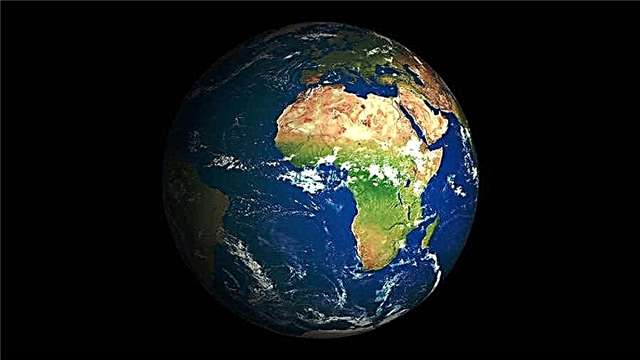
According to the model of the solar system, we can understand that the orbits of all its planets are as if in the same plane. If outer space is so vast, the question arises: why do planets move along such trajectories rather than rotate around the Sun randomly?
The formation of the solar system
The knowledge gathered over many years enables scientists to only speculate on how the solar system was formed. There is a generally accepted nebular theory according to which the sun and planets emerged from a molecular cloud. The dense cloud was subjected to sharp compression under the influence of gravity.
The estimated age of the solar system is 4.6 billion years. First of all, the Sun was formed in the central part of the gas-dust cloud. Around it, from a substance that appeared outside the center, a protoplanetary disk was formed. Later, planets, satellites and other cosmic bodies arose from it.
The cloud itself, according to scientists, could have formed after a supernova explosion. Its mass must have corresponded to the mass of 30 Suns. The supernova got the name Coatlicue. Subsequently, the solar system evolved.

The nebular hypothesis appeared in the 18th century. It was put forward by the scientists Swedenborg and Laplace together with the philosopher Kant. To date, this theory is tested and improved on the basis of new data.
At the beginning of the 21st century, scientists dramatically changed their minds about what the Solar System looked like at the beginning of its existence. It was previously thought that over billions of years nothing has changed. However, according to new ideas, now it has become more cumbersome.
What does the solar system consist of?
In the modern view, the solar system includes a central star, as well as natural cosmic bodies that rotate around it. The mass of the system is 1.0014 M☉ (a special unit of measurement used in astronomy).
Most of this mass is the sun, all the rest are planets of the system. It includes eight planets. Moreover, the solar system consists of an internal and external region. The inner region is represented by nearby planets: Mercury, Venus, Earth and Mars. The outer region is formed by Jupiter, Saturn, Uranus and Neptune.

How do planets and the sun move?
The planets of the solar system are distant from each other. They move along special trajectories - orbits. Planetary orbits have the shape of an elongated circle. In this case, the orbits are located almost in the same plane, which is called the ecliptic plane.
It is through the ecliptic, the great circle of the celestial sphere, that the sun moves. This movement can be observed from Earth throughout the year. The Sun makes a complete revolution in a sidereal year, which is 365.2564 days.
Interesting fact: all the planets of the solar system rotate in the same direction as the sun. If you observe from the North Pole, then the rotation occurs counterclockwise.Six planets, with the exception of Venus and Uranus, rotate counterclockwise around their axis.
The problem of the location of the planets is directly related to the theory of the formation of the solar system. This is a rather complicated question, especially since scientists can only model and arrange simulations of this process. It is worth noting that in fact the orbits lie almost in the same plane, since they are characterized by a slight deviation.
The probable reason for this arrangement is that the planets of the solar system formed within a single protoplanetary disk. In other words, they formed from the same matter. In the process of the formation of the central star, particles beyond its limits continued to move and rotate randomly, but at the same time, a common center of mass acted on them. Thus, the rotation of the Sun formed a single plane of rotation of the planets.

In accordance with the Law of universal gravitation, planets revolve around the Sun, since it has a much larger mass. Therefore, the solar system remains relatively stable and planets do not fly into space.
Scientists managed to find a young star HL Taurus, whose age is about 100,000 years. It is located 450 light-years from Earth. A protoplanetary disk was discovered around the star, as well as one formed planet no more than 2000 years old. Accumulations of gases that can subsequently become planets are clearly visible within this disk.
This finding provides an opportunity for scientists to observe the formation of a new star system and, based on the data obtained, expand information about the appearance of the solar system.
The location of the planetary orbits in almost the same plane is explained by the nebular theory of the formation of the solar system. In accordance with it, the Sun was formed due to a sharp compression of the gas-dust cloud. A star formed in the center of the cloud, and a protoplanetary disk around it. In the future, planets arose from it - in other words, they formed from the same matter. Planets do not fly into space, but rotate in elongated orbits around the Sun due to the force of attraction (the Sun occupies 99% of the mass of the entire system).












